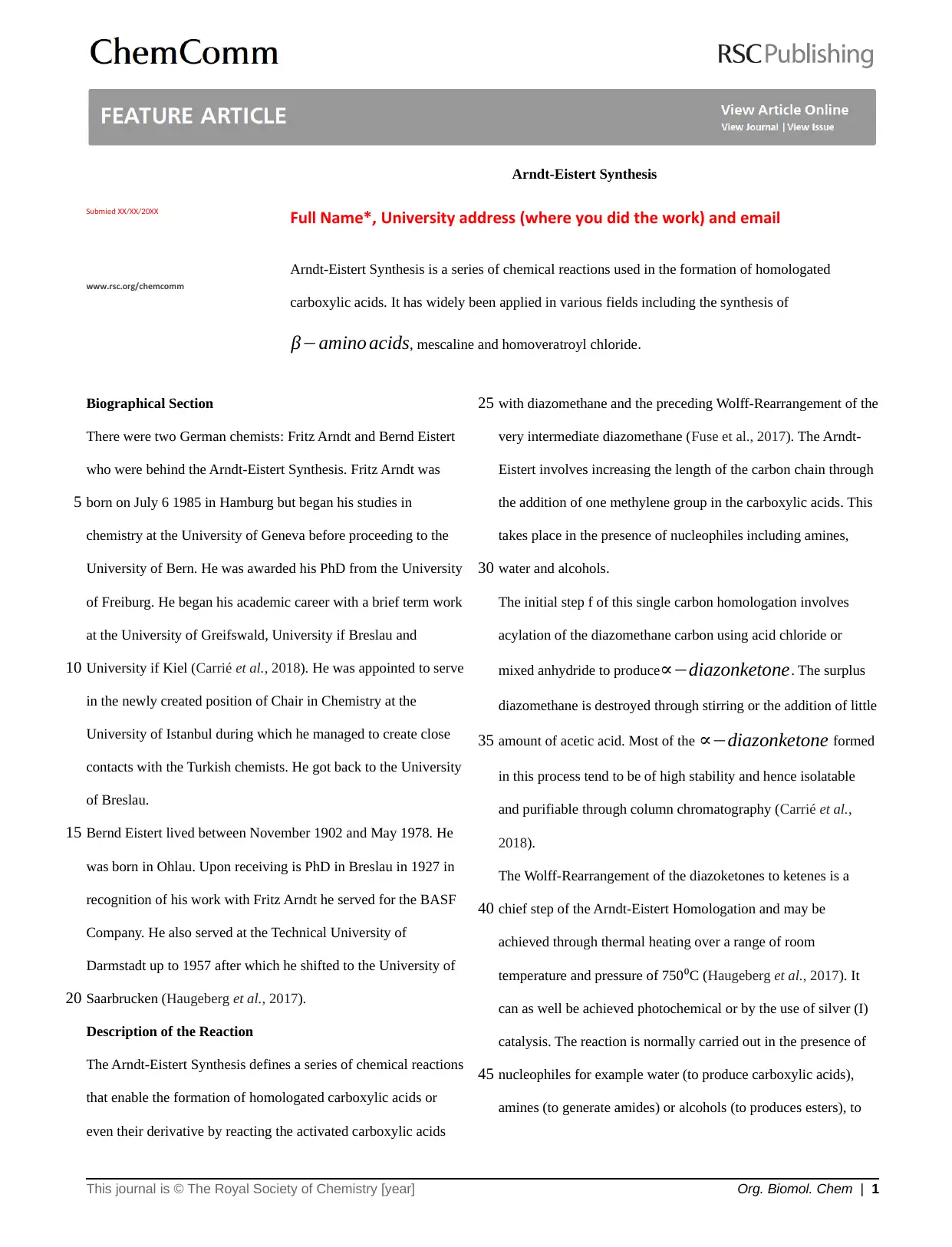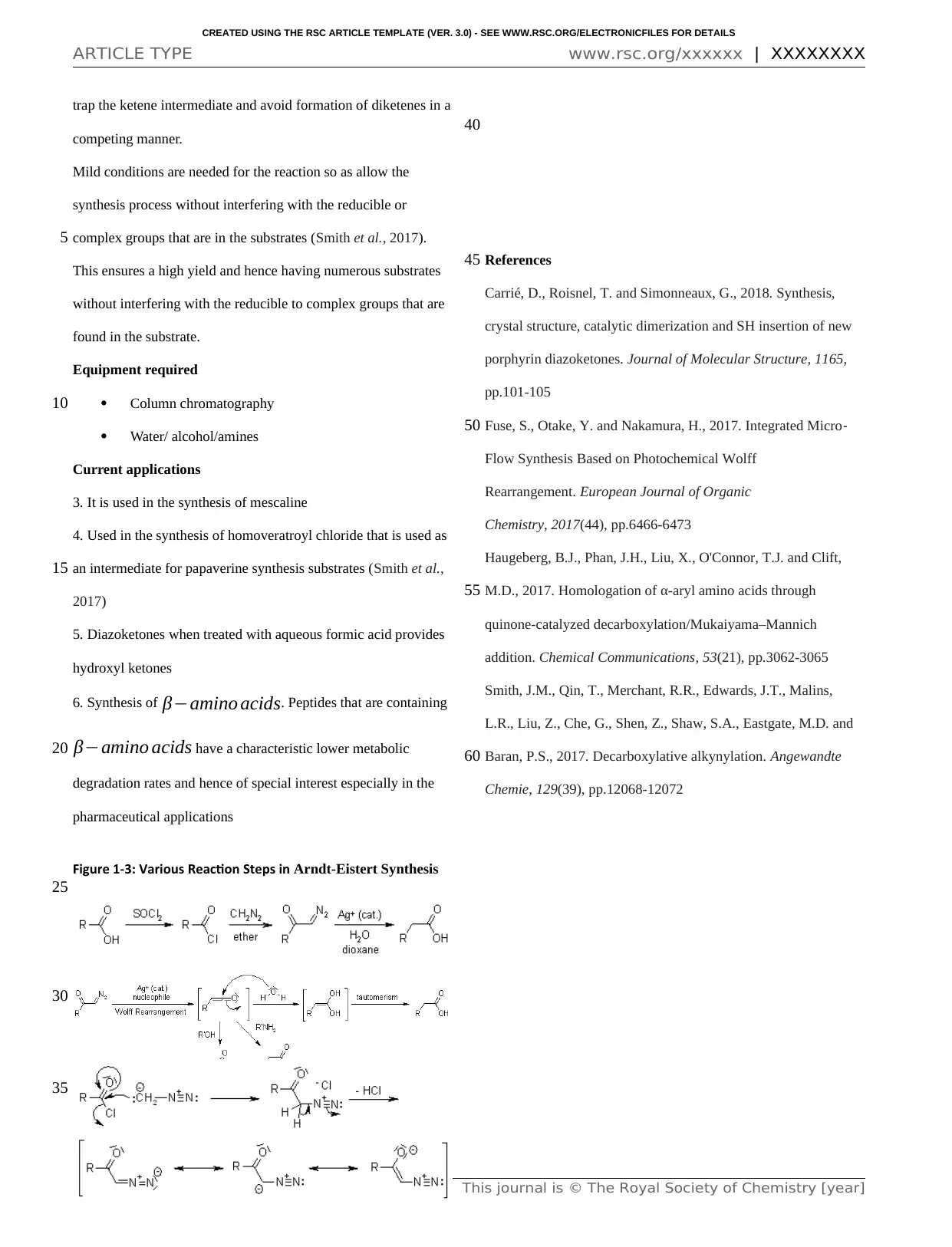SLE214 - Arndt-Eistert Synthesis: Mechanism, Applications & Synthesis
VerifiedAdded on 2023/06/09
|2
|942
|448
Report
AI Summary
The Arndt-Eistert Synthesis is a chemical reaction sequence used to homologate carboxylic acids, increasing the carbon chain length by one methylene group. It involves the acylation of diazomethane to form α-diazoketones, followed by the Wolff rearrangement to ketenes, typically under thermal, photochemical, or silver (I) catalysis. The reaction is conducted in the presence of nucleophiles like water, amines, or alcohols to trap the ketene intermediate and yield carboxylic acids, amides, or esters, respectively. Mild conditions are crucial to avoid interference with reducible or complex groups in the substrates, ensuring high yield. Applications include the synthesis of β-amino acids, mescaline, and homoveratroyl chloride, highlighting its significance in various chemical fields. Desklib provides solved assignments and past papers for students.
1 out of 2


![[object Object]](/_next/static/media/star-bottom.7253800d.svg)